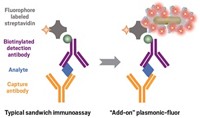Advertisement
Grab your lab coat. Let's get started
Welcome!
Welcome!
Create an account below to get 6 C&EN articles per month, receive newsletters and more - all free.
It seems this is your first time logging in online. Please enter the following information to continue.
As an ACS member you automatically get access to this site. All we need is few more details to create your reading experience.
Not you? Sign in with a different account.
Not you? Sign in with a different account.
ERROR 1
ERROR 1
ERROR 2
ERROR 2
ERROR 2
ERROR 2
ERROR 2
Password and Confirm password must match.
If you have an ACS member number, please enter it here so we can link this account to your membership. (optional)
ERROR 2
ACS values your privacy. By submitting your information, you are gaining access to C&EN and subscribing to our weekly newsletter. We use the information you provide to make your reading experience better, and we will never sell your data to third party members.
Analytical Chemistry
A Pocket Test For Melamine-Adulterated Milk
Analytical Chemistry: Chemists adapt the personal glucose meter to test for illegal milk additive
by Louisa Dalton
July 20, 2015

A new test converts the personal glucose meter (PGM) into a portable tool for exposing milk contaminated with melamine (Anal. Chem. 2015, DOI: 10.1021/acs.analchem.5b01085).
Used in plastic dinnerware, colorants, and flame retardants, melamine is not approved for use in food. Yet, in 2008, the Chinese government discovered that manufacturers were illegally adding melamine to milk powder, a practice that led to six infant deaths that year and sickened 300,000, according to news reports. Melamine’s high nitrogen content fools simple tests for protein, indicating falsely high protein levels. Subsequently, both U.S. and Chinese governments imposed a limit of 1-ppm melamine in infant milk products.
A fast, portable test that could check for melamine adulteration anywhere along the chain of production would help manufacturers and consumers, says Yi Lu of the University of Illinois, Urbana-Champaign. Lu’s group has developed ways to use the PGM to determine concentrations of metal ions, antibodies, and more. Lu and collaborators at Tsinghua University, in Beijing, extended this to melamine in milk.
The researchers identified a DNA aptamer—a sequence that binds with high specificity to a molecule of interest—for melamine. To measure melamine concentrations, the researchers add the aptamer to milk along with two complementary DNA sequences: one linked to a magnetic bead and the other to invertase enzyme, which converts sucrose to glucose. In the absence of melamine, the aptamer binds to both the bead and to invertase, allowing the researchers to remove invertase from the solution with a magnet. But if the aptamer binds melamine, it can’t bind to the bead or to invertase. The magnet removes empty beads, leaving behind invertase in proportion to the melamine concentration. Then when the researchers mix the sample with sucrose, the invertase produces glucose for the PGM to measure. The aptamer can detect melamine at 67.5 ppb in the presence of melamine analogs and milk proteins.
GlucoSentient, a company Lu cofounded, is working to commercialize the test.







Join the conversation
Contact the reporter
Submit a Letter to the Editor for publication
Engage with us on Twitter